Early Career Scientist Spotlight
Dr. Zachary Nasipak (he/him/his)
Gravitational Astrophysicist
Gravitational Astrophysics Laboratory (663)
Did you always know that you wanted to be a Gravitational Astrophysicist?
Yes and no. No, because, when I was growing up, I had no conception of what it really meant to be a scientist or how you might become one. I knew scientists existed thanks to books, movies, and TV, but I didn’t know any in real life. To me, scientists were people who lived in faraway places with completely different lives from mine. I didn’t know that I wanted to be a Gravitational Astrophysicist, because it was impossible for me to imagine myself as one.
On the other hand, I have always been fascinated by nature and our universe. I was one of those kids that was always asking, "Why?" My mom frequently took me to the library, where I was excited to read and learn more about whatever new topic captured my attention: dinosaurs, volcanoes, cacti, you name it. In fact, one summer in elementary school, I was so interested in snakes that I wrote a book report on them just for fun.
In high school, I became captivated by space. I started reading books like Stephen Hawkings’ The Universe in a Nutshell and A Brief History of Time, and watching reruns of Cosmos and PBS NOVA specials. These books and shows introduced me to topics such as relativity, black holes, the multiverse, and the Big Bang. I was awe-struck by these ideas: by how the cosmos can be both a strange and a familiar place, and by how much we already know about the universe and yet how much we have left to learn. In retrospect, it feels like I was always building the skills to become an astrophysicist.
When I first started undergrad at Vassar College, however, I had no intention of majoring in science. In my mind, you went to college to get a job, and I did not see science as an actual career path. I planned on majoring in economics. And yet the first classes I signed up for were in Astronomy, Physics, Chemistry, and Math. Even if “astrophysicist” was not yet a part of my career vocabulary, I was excited to learn more about the universe. As time went on, I took more classes in Physics and Astronomy and started working at the Vassar observatory and in different physics labs. Finally, I was starting to understand what a science career might look like. At the end of my sophomore year, I decided to major in Physics and Astronomy. Then, the summer after my junior year, I started an internship in the Gravitational Astrophysics Division at NASA Goddard, where I worked with Dr. John Baker and Dr. Bernard Kelly on simulations of black holes. That was the defining moment. Not only did I realize that someone could have a career studying black holes, but I could finally imagine myself having that career! And that’s when I knew I wanted to be a Gravitational Astrophysicist.
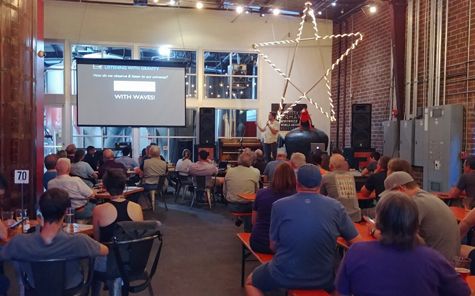
Credit: Josh Reding, Astronomy on Tap Triangle.
How did you end up working at NASA Goddard?
For my PhD, I numerically modeled black hole systems known as extreme-mass-ratio inspirals, or EMRIs. EMRIs are binary systems composed of a small compact object---usually a black hole about the mass of the Sun---that is gradually inspiraling into a supermassive black hole---which can be millions to billions of times the mass of the Sun and typically sits at the heart of a galaxy. As the small black hole slowly orbits and falls towards its companion, the system emits long-lived, incredibly complicated gravitational wave signals that effectively map the structure of space and time around the EMRI. This makes EMRIs excellent systems for exploring the gravitational and astrophysical environments in galactic centers and around supermassive black holes (provided we can measure their gravitational wave signals). While EMRI signals are too low-frequency to be observed by ground-based detectors---such as LIGO and Virgo, which made the first Nobel-winning observations of gravitational waves---they are ideal sources for the future space-based gravitational wave observatory LISA (Laser Interferometer Space Antenna), which will launch in the 2030s. LISA will require accurate and efficient simulations of EMRI gravitational waves in order to observe them. Therefore, for my dissertation, I researched different methods for improving the computational efficiency of EMRI models.
After finishing my dissertation, I wanted to continue studying EMRIs and to become more involved in the LISA mission. While LISA is led by the European Space Agency, NASA is a supporting partner, and NASA Goddard conducts a lot of scientific and technological research for LISA. I applied for a NASA postdoctoral fellowship to continue my EMRI research at Goddard, and I was fortunate enough to receive the fellowship and begin working at Goddard in 2020.
Tell us about the research projects you are currently working on.
A lot of my recent work has focused on modeling the impact of orbital resonances on EMRIs. Because the inspiral of the small black hole is so gradual, its orbital motion is nearly tri-periodic and can be described in terms of three slowly-evolving frequencies. For almost all EMRIs with a rotating supermassive black hole, there will be a moment in the inspiral where two of those three frequencies become resonant, meaning they form low-integer ratios like 1:2 or 2:3. These orbital resonances are particularly interesting because they can enhance or diminish the gravitational wave emission of an EMRI, thereby changing the evolution of their gravitational wave signals.
From a modeling side, these resonances will amplify different dynamical effects that we usually neglect or calculate less accurately when we model EMRIs far away from resonances. However, it is still unclear exactly how much resonances will enhance different effects, since it is particularly difficult to numerically model EMRIs during these resonant periods. In my recent research, building upon the methods developed during my PhD, I demonstrated with a simplified model that orbital resonances will most likely enhance an effect in EMRIs known as the conservative self-force. While this force usually has a small effect away from resonances, I found that neglecting it during a resonance can introduce leading-order errors to an EMRI model, thereby contaminating EMRI gravitational wave simulations. Since the LISA detector will rely on highly accurate gravitational wave simulations in order to observe and characterize EMRIs, it is vital that researchers properly model these resonant effects so that LISA reaches its full scientific potential.
Currently I am working with other researchers to verify the strength of this resonant conservative self-force effect and to establish efficient methods for incorporating it in EMRI gravitational wave simulations. This work has also been a launch point for several other projects, including work that looks at better quantifying the precision with which we can characterize EMRIs that are observed by LISA, a project that looks to leverage machine learning algorithms to improve the speed at which we can model EMRI signals, and new research that looks to develop entirely new procedures for calculating other dynamical self-force effects around rapidly spinning supermassive black holes.

Credit: Zachary Nasipak
What is one of your favorite moments in your career so far?
Back in 2018, I was giving a talk at Capra, a week-long international conference that is hosted each year by my research field. That year Capra was held in Rio de Janeiro, Brazil. The evening of the conference dinner we were standing outside, enjoying some appetizers, before going inside to sit down for dinner. Gradually, the sky darkened, and the stars shimmered into view. Then someone exclaimed, “Woah! It’s the Southern Cross!” (The Crux constellation). Suddenly, for many of us, it clicked: this was the first time we had ever been in the Southern Hemisphere, and the first time we had ever seen the southern night sky! Quickly more and more people congregated together, pointing out the different stars and constellations that we had only ever known through pictures and sketches. It was a surreal moment: people from across the world, from new students to famed researchers, returned to a magical state of child-like joy as we stared at the night sky with renewed awe and wonder. That memory continually reminds me why I love researching the universe.
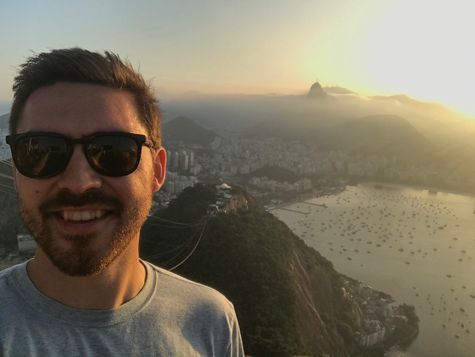
Credit: Zachary Nasipak
Where do you see yourself in the near future?
In the very near future, I see myself spending a lot more time at home as my wife and I look forward to the birth of our first child this fall! So I am not going to even try and predict what the next year looks like. But I do hope that in the near-ish and extended future that I get to continue studying EMRIs and performing research that supports the LISA mission. I really enjoy the research environment and community here at Goddard, and it would be great if there was an opportunity for me to stay after my postdoctoral fellowship ends. LISA will not launch until the 2030s, so I’d love to have a career where I get to be a part of the mission until its very end!
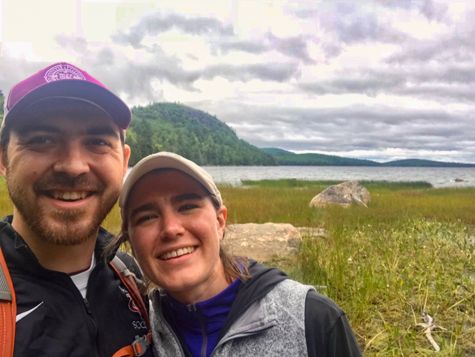
Credit: Zachary Nasipak
What do you like to do in your free time?
Since I spend a lot of time at work on a computer, I enjoy getting outside as much as I can, whether that involves playing soccer, hiking in the woods, or going on a walk in the neighborhood with my wife Rebecca and our dog, Frankie. During the pandemic, I really got into running, too, so I spend a lot of time joining friends for different weekly runs or yearly races in the area. (Shoutout to Baltimore’s A Tribe Called Run!) When I am not outdoors, I enjoy sitting around reading, playing video and board games, cooking, completing crosswords, watching shows with Rebecca, or playing with Frankie and our cat, Owen.
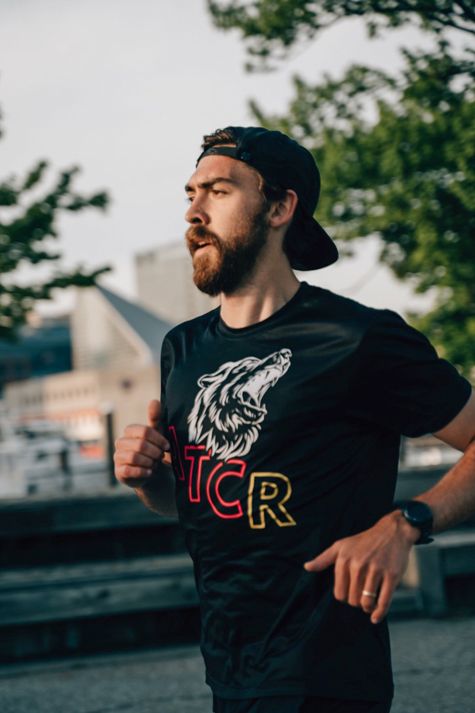
Credit: Brandon Rossi @brandonmichaelrossi, Believe in the Run Club.
What early career advice do you have for those looking to do what you do?
Be confident in yourself, stay curious, and build a community of people who will continue to support and inspire you! As you start to do research, pay attention not only to the types of problems that interest you, but also the people you enjoy working with. One big reason I love my research on EMRIs is because I enjoy working with my colleagues across the world who also study EMRIs. Additionally, I would not have made it this far without the amazing support of friends and family, or without the trust, reassurance, and creative inspiration I get from my colleagues. While research can be fun, it can also be hard and frustrating. There are times where you or a colleague will be wrong or when none of your research seems to be working out. So be gracious to yourself and to others. Remember that being stuck or wrong does not mean you’re failing; you’re learning; you’re doing research! So be curious and keep asking questions. There is still more for us all to learn from the world and people around us.
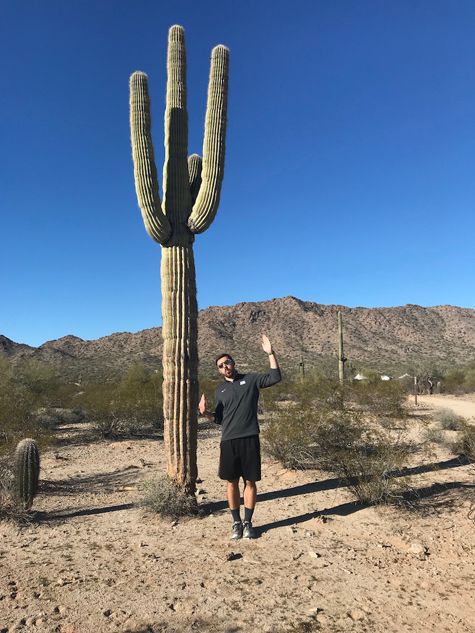
Credit: Rebecca Ogus.
Biography
Home Town:
Scottsdale, Arizona
Undergraduate Degree:
BA Physics, Vassar College, Poughkeepsie, NY
Post-graduate Degrees:
PhD Physics, University of North Carolina at Chapel Hill, Chapel Hill, NC

Link to Dr. Nasipak's GSFC Bio
